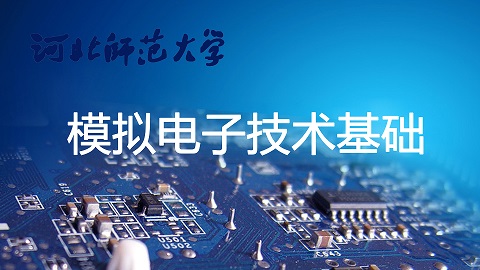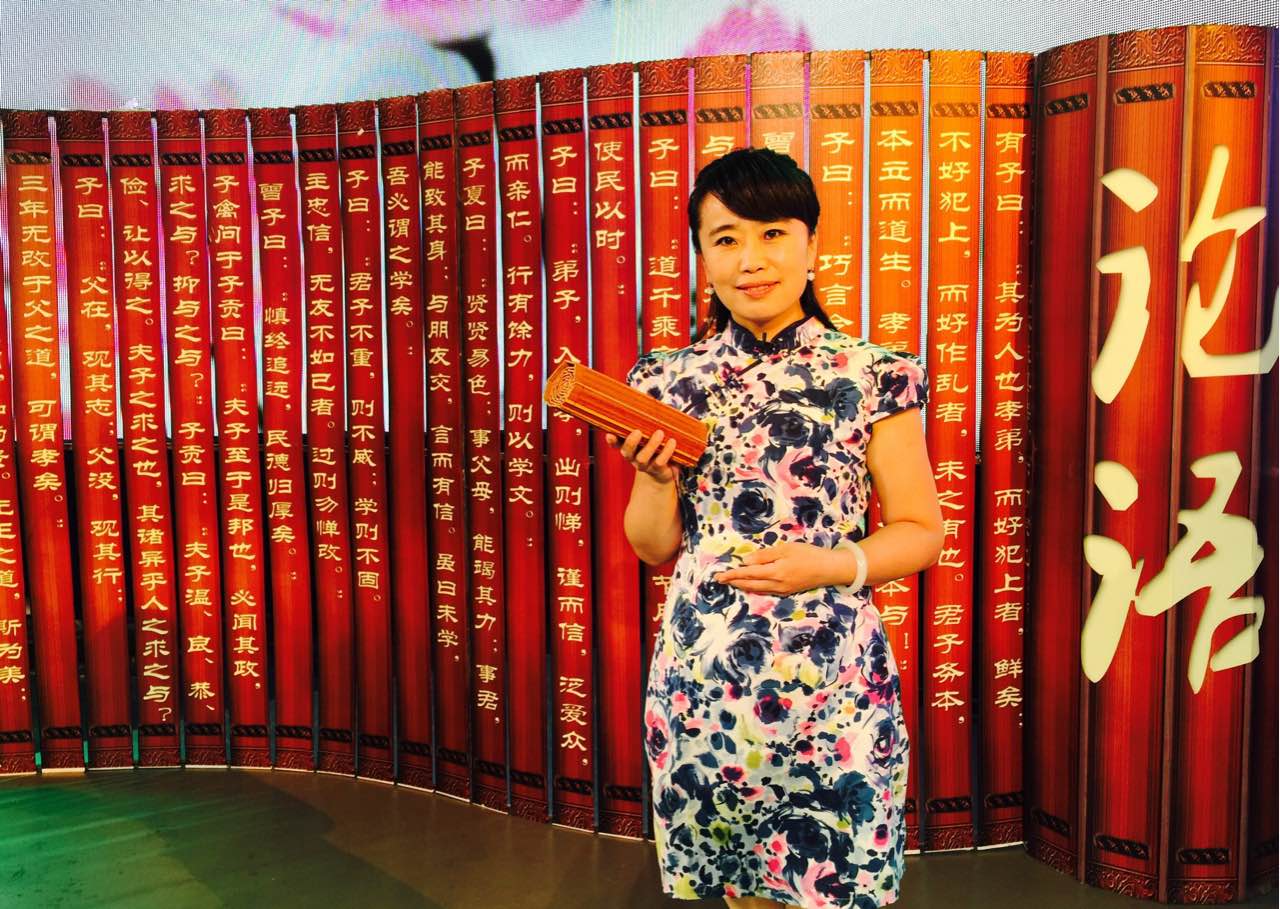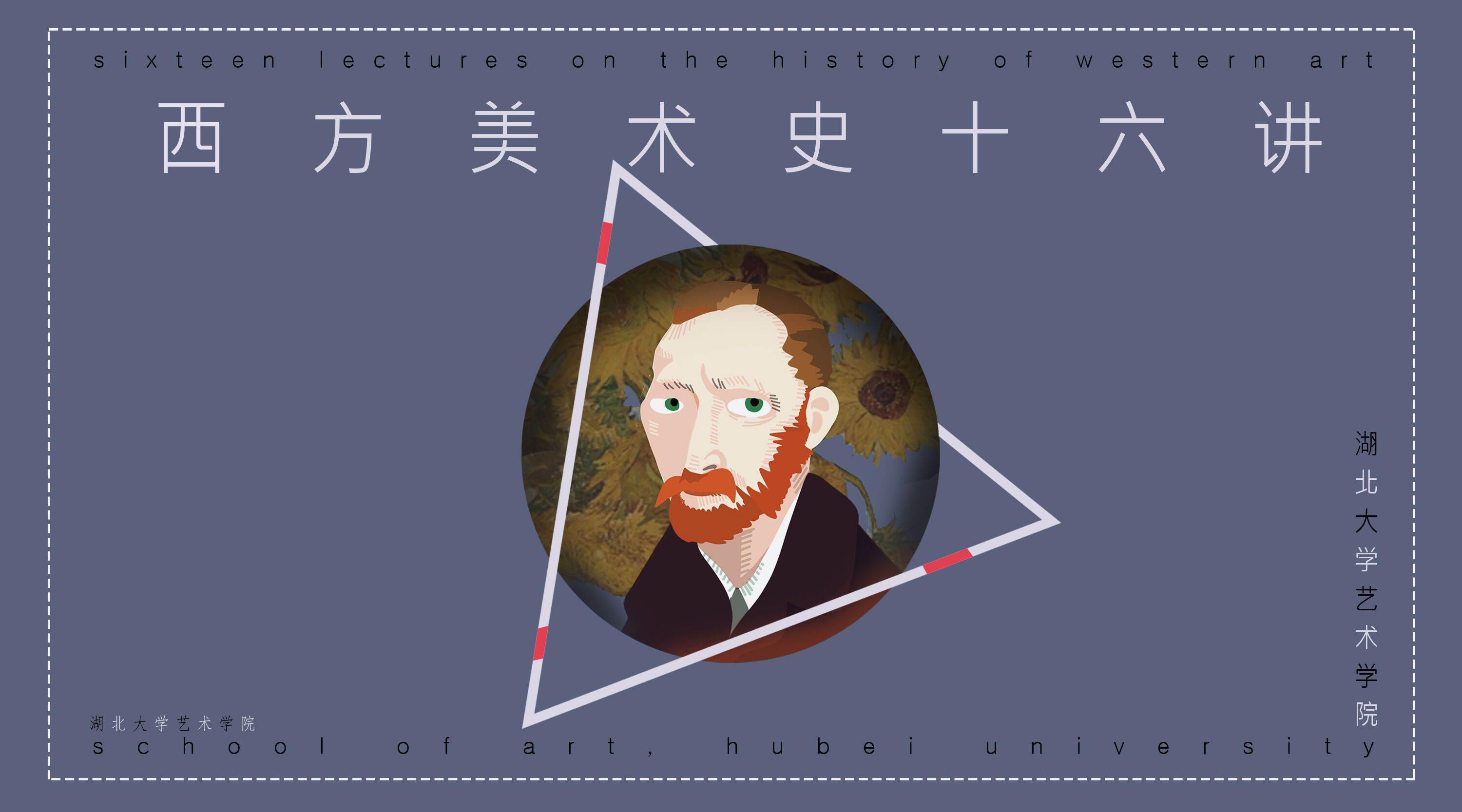
当前课程知识点:Overview of China > 第三章 理解中国 Understanding China > 3.1 中国历史 Chinese History > 3.1.3 日新月异的和平中国 Peaceful China changing with each passing day
返回《Overview of China》慕课在线视频课程列表
朋友 您好 欢迎您 走进中国
Hello! Welcome to the Overview of China
了解更多关于中国的知识
and know more about China.
我们一起来了解一下新中国的政治制度和外交成就
We are going to know more about the political system and diplomatic achievements of new China.
1949年10月1日 新中国宣告成立
On October 1, 1949, the People's Republic of China was proclaimed,
随后中国恢复了国民经济
and then China restored its national economy,
建立了社会主义制度
established a socialist system,
改善了人民的生活
improved people's lives,
加强了民族团结
strengthened national unity,
发展了对外关系
and developed foreign relations,
恢复了中国在联合国的合法席位
China's legal seat in the United Nations has been restored,
政治 经济面貌得到了巨大改观
and its political and economic outlook has been greatly improved.
从1978年开始 中国实行改革开放
Since 1978, China has carried out reform and opening up,
建设有中国特色社会主义
with the construction of socialism with Chinese characteristics,
经济发展速度大大加快
the speed of economic development has been greatly accelerated,
综合国力不断提升
the comprehensive national strength has been continuously improved,
国际地位迅速提高
and the international status has been rapidly improved.
成功运用 一国两制 方针
The "one country, two systems" policy has been successfully used
解决了香港 澳门问题
to solve the problems of Hong Kong and Macao.
党的十八大以来
Since the 18th National Congress of the Communist Party of China,
以习近平同志为核心的党中央
the Party Central Committee, with Comrade Xi Jinping as the core
取得了改革开放和社会主义现代化建设的历史性成就
has made historic achievements in reform and opening up and socialist modernization,
进入新时代中国特色社会主义
and has entered a new era of socialism with Chinese characteristics.
新中国的政治制度
The Political System of New China
政治协商制度
System of Political Consultation
1949年9月
In September 1949,
中国人民政治协商会议在北平开幕
the Chinese People's Political Consultative Conference opened in Peiping,
会议通过了 共同纲领
The conference adopted the Common Agenda,
起到了临时宪法的作用
it served as an interim constitution.
10月1日下午3时
At 3 p.m. on 1 October,
举行开国大典
held the founding ceremony,
毛泽东在天安门城楼上
Mao Zedong on the Tiananmen gate tower,
向世界庄严宣告 中华人民共和国中央人民政府成立了
solemnly declare to the world: "the Central People's Government of the People's Republic of China is established!"
中华人民共和国的成立
The founding of the People's Republic of China,
标志着一百多年来半殖民地半封建社会的终结
marking the end of a century of sem-colonial and semi-feudal society,
中国进入了新的历史时期
China has entered a new historical period.
人民成为国家的主人
The people become the masters of the country.
在1954年
In 1954,
第一届全国人民代表大会召开后
after the First National People's Congress was convened,
中国人民政治协商会议便不再代行全国人民代表大会的职能
the CPPCC no longer functions as the National People's Congress.
作为统一战线组织存在
As a united front organization,
在参政议政
in politics,
民主监督方面发挥重要职能
democratic oversight played an important role.
中国共产党领导的多党合作和政治协商制度是中国的一项基本政治制度
The system of multi-party cooperation and political consultation under the leadership of the CPC is a basic political system in China.
人民代表大会制度
The System of People's Congresses
中国现行的宪法是1982年颁布 2018年修订的版本
China's current constitution was promulgated in 1982 and revised in 2018.
宪法规定
The Constitution says,
中华人民共和国是工人阶级领导的
the People's Republic of China is led by the working class.
以工农联盟为基础的人民民主专政的社会主义国家
A socialist country under the people's democratic dictatorship based on the alliance of workers and peasants.
中华人民共和国的一切权力属于人民
All power in the People's Republic of China belongs to the people.
人民行使国家权力的机关是全国人民代表大会和地方各级人民代表大会
The organs through which the people exercise state power are the National People's Congress and the local people's congresses at various levels.
中华人民共和国的国家机构实行民主集中制的原则
The state organs of the People's Republic of China practice the principle of democratic centralism.
全国人民代表大会和地方各级人民代表大会都由民主选举产生
The National People's Congress and the local People's Congresses at various levels are elected through democratic elections.
对人民负责 受人民监督
Be responsible to the people and subject to their supervision.
国家行政机关 监察机关 审判机关 检察机关都由人民代表大会产生
Administrative, Supervisory, Judicial and Procuratorial organs of the state are created by the People's Congress.
对它负责 受它监督
Be responsible for it, be supervised by it.
人民代表大会制度
The system of People's Congresses,
是中国的一项根本政治制度
it is a fundamental political system in China.
民族区域自治制度
The System of Regional Ethnic Autonomy
新中国成立后
After the founding of new China,
为了保障各少数民族的合法权利和利益
in order to protect the lawful rights and interests of ethnic minorities,
维护和发展各民族的平等团结互助和谐关系
to maintain and develop relations of equality, solidarity, mutual assistance and harmony among all ethnic groups;
实行民族平等和民族团结政策
to implement the policy of ethnic equality and unity,
并在各少数民族聚居的地方实行区域自治
and exercise regional autonomy in areas where people of various ethnic minorities live in compact communities;
设立自治机关 行使自治权
to establish organs of self-government and exercise the power of autonomy.
宪法规定
The Constitution says,
各民族自治地方都是中华人民共和国不可分离的部分
all ethnic autonomous areas are inseparable parts of the People's Republic of China.
民族区域自治制度是中国的一项基本政治制度
The system of regional ethnic autonomy is a basic political system in China.
新中国的外交成就
China's Diplomatic Achievements
独立自主的和平外交政策
An Independent Foreign Policy of Peace
新中国成立后
After the founding of new China,
以美国为首的资本主义阵营
the U.S.A.-led camp of capitalism,
对新中国采取政治上不承认
to adopt a political non-recognition of new China,
经济上封锁 军事上威胁的政策
a policy of economic blockade and military threat.
在这种情况下
In this case,
毛泽东提出了中国坚持走独立自主的和平外交政策
Mao Zedong put forward China's independent foreign policy of peace.
不承认国民党时期的外交关系
It didnot recognize the diplomatic relations of the Kuomintang period,
欢迎各国在平等的基础上重新与新中国缔结外交关系
welcoming the re-establishment of diplomatic relations with new China on the basis of equality,
也就是 另起炉灶
That is, "start over."
对于帝国主义在中国的特权
As for the imperial prerogatives in China,
均不予以承认
neither shall be admitted,
也就是 打扫干净屋子再请客
i.e. “Clean the house before we invite you.”
面对帝国主义的包围和威胁
In the face of imperialist encirclement and threat,
中国优先发展同社会主义阵营国家的外交关系
China gives priority to developing diplomatic relations with countries in the socialist camp.
也就是 一边倒
That is, “One-sided”,
倒向苏联
to the Soviet Union,
坚定站在社会主义阵营
stand firmly in the socialist camp.
和平共处五项原则
The Five Principles of Peaceful Coexistence
1953年
In 1953,
周恩来在接见印度代表时
when Zhou Enlai received the Indian representative,
首次提出了和平共处五项原则
put forward for the first time the Five Principles of Peaceful Coexistence,
即 互相尊重领土主权
that is, "mutual respect for territorial sovereignty,
互不侵犯
non-aggression,
互不干涉内政
non-interference in each other's internal affairs,
平等互惠
equality and reciprocity,
和平共处
peaceful coexistence ".
1954年
In 1954,
周恩来访问印度和缅甸时
When Zhou Enlai visited India and Myanmar,
双方再次重申了和平共处五项原则
the two sides reaffirmed the Five Principles of Peaceful Coexistence.
这一原则现已经成为调节国际关系的重要原则
This principle has now become an important principle in regulating international relations.
1954年4月至7月 中国美国法国苏联
From April to July 1954, China, the United States, France, the Soviet Union
还有朝鲜战争和印度支那战争的交战各方
and the warring parties in the Korean War and the Indochina War
在日内瓦召开会议
met in Geneva
讨论停战问题
to have a discussion on the armistice
这是新中国第一次以大国的身份参加重要国际会议
This is the first time that new China has participated in an important international conference as a great power.
1955年在印尼召开的万隆会议上
At the Bandung Conference in Indonesia in 1955,
周恩来代表中国政府重申了和平共处五项原则
on behalf of the Chinese government, Zhou Enlai reaffirmed the Five Principles of Peaceful Coexistence,
同时提出了 求同存异 的原则
and put forward the principle of "seeking common ground while reserving differences".
确保了万隆会议的圆满成功
Ensure the success of the Bandung Conference.
恢复联合国合法席位
Restoration of the Legitimate Seat of the United Nations
1971年10月25日
On October 25, 1971,
在第26届联大会议上
at the 26th session of the General Assembly,
中国恢复了在联合国合法席位以及安理会常任理事国的席位
China has resumed its lawful seat in the United Nations and its permanent seat on the Security Council.
随后 中国派出了以乔冠华为团长的代表团参加联合国大会
Then China sent a delegation headed by Qiao Guanhua to the UN General Assembly.
开创了中国以联合国为中心的多边外交关系新局面
It has opened a new chapter in China's multilateral diplomatic relations centered on the United Nations.
中美关系缓和
Detente between China and the U.S.A.
20世纪60年代末
In the late 1960s,
中美两国政府都决定改善中美关系
both governments of China and U.S.A. are determined to improve relations.
1971年7月
In July 1971,
美国总统尼克松的安全事务助理基辛格访华
Henry Kissinger, U.S.A. President Nixon's security adviser,visited China,
中美两国同时宣布尼克松总统将要访华的消息
The two countries announced at the same time that President Nixon would visit China,
震惊了世界
which shocked the world.
1972年2月21日
On February 21, 1972,
尼克松总统成功访问中国
President Nixon's successful visited to China.
双方签署了《联合公报》
The two sides signed the Joint Communique.
中美关系开始走上了正常化的道路
The relationship between China and the United States began to normalize.
直到1979年1月
Until January 1979,
中美建交
China and the United States established diplomatic relations.
上海合作组织
Shanghai Cooperation Organization
2001年6月15日
On June 15, 2001,
中国
China,
哈萨克斯坦
Kazakhstan,
吉尔吉斯斯坦
Kyrgyzstan,
俄罗斯
Russia,
塔吉克斯坦
Tajikistan
乌兹别克斯坦
and Uzbekistan
在中国上海宣布成立的永久性政府间国际组织
announced the permanent intergovernmental international organization in Shanghai, China,
称为上海合作组织
it's called the Shanghai Cooperation Organization(SCO).
2017年6月
In June 2017,
印度和巴基斯坦成为上合组织正式成员
India and Pakistan have become full members of the SCO.
这是上合组织2001年成立以来首次扩大
This is the first expansion of the SCO since its establishment in 2001.
目前
At present,
上海合作组织已成为人口最多
the SCO has become the most populous,
地域最广
the most extensive,
潜力巨大的跨区域多边综合性组织
multi-regional comprehensive organizations with great potential.
为维护地区安全稳定
To maintain regional security and stability,
促进共同发展繁荣做出了重要贡献
it has made important contributions to promoting common development and prosperity.
好 关于中国的政治制度和外交成就我们就讲到这里 谢谢
OK! That's all we have to say about the political system and diplomatic achievements of new China. Thank you!
-1.1 初识中国 First acquaintance of China
--1.1 初识中国 First acquaintance of China
-1.2 人文中国 Humanistic China
-1.3 美丽中国 Beautiful China
-1.4 绿色中国 Green China
-1.5 民俗中国 Folklore China
-小测验 Quiz
-2.1 畅行中国 Unimpeded China
--2.1.1 中国交通方式 China's mode of transportation
--2.1.2 中国著名人文景观 Famous cultural landscape in China
--2.1.3 中国著名自然景观 Famous natural landscape in China
-2.2 乐居中国 Happy living in China
--2.2.1 中国传统官式建筑 Traditional Chinese official architecture
--2.2.2 中国传统民居 Traditional Chinese houses
--2.2.3 中国现代城镇的发展 The development of modern towns in China
-2.3 食在中国 Eating in China
-2.4 穿在中国 Wear in China
-2.5 医在中国 Medicine in China
-小测验 Quiz
-3.1 中国历史 Chinese History
--3.1.1.走向大一统的中华文明 Towards the unification of Chinese civilization
--3.1.2 多民族融合的封建帝国 A multi-ethnic feudal empire
--3.1.3 日新月异的和平中国 Peaceful China changing with each passing day
--小测验 Quiz
-3.2 中国科技 China‘s Science and Technology
--3.2.1 中国古代四大发明 Four great inventions in ancient China
--3.2.2 中国古代数学和天文学 Ancient Chinese mathematical astronomy
--3.2.3 古代青铜器和农业科技 Ancient bronzes and agricultural technology
--3.2.4 中国新四大发明 Four new inventions in China
--3.2.5 国防与民生科技 National defense and people's Livelihood Science and technology
--3.2.6 中国航空航天 China Aerospace
--小测验Quiz
-3.3 中国经济 China's Economy
--3.3.1 中国古代农业和手工业 Ancient Chinese agriculture and handicraft industry
--3.3.2 中国古代商业 Ancient Chinese Commerce
--3.3.3 中国现代经济政策和体制 China's modern economic policy and system
--3.3.4 中国经济发展的成就 Achievements in China's economic development
--3.3.5 中国经济发展的新趋势 The new trend of China's economic development
--小测验Quiz
-3.4 中国教育 Education in China
--3.4.1 古代哲学和教育思想 Ancient philosophy and educational thought
--3.4.2 古代学校教育 Ancient school education
--3.4.3 科举制度 Imperial examination system
--3.4.4 扫盲运动与高考 Literacy campaign and college entrance examination
--3.4.5 中国现代教育体系 China's modern education system
--3.4.6 国际教育交流与合作 International educational exchange and cooperation
--小测验Quiz
-4.1 文学欣赏 Literary Appreciation
--4.1.1 《诗经》和《离骚》Book of Songs and Li Sao
--4.1.2 诸子散文 Philosophical Prose
--4.1.3 唐诗宋词 Chinese Tangsong Poetics
--4.1.4 四大名著 Four Masterpieces
--4.1.5 中国现代文学 Modern Chinese Literature
--4.1.6 中国当代文学 Contemporary Chinese Literature
--小测验 Quiz
-4.2 音乐欣赏 Music Appreciation
--4.2.1 中国传统音乐与乐器 Traditional Chinese Music and Musical Instruments
--4.2.2 中国古典十大名曲 Ten Famous Classical Chinese Songs
--4.2.3 五彩缤纷的现代音乐 Colorful Modern Music
--小测验 Quiz
-4.3 戏曲欣赏 Opera Appreciation
--4.3.2 豫剧和其他地方戏 Henan Opera and Other Local Operas
--4.3.3 皮影戏和样板戏 Shadow Play and Model Play
--小测验 Quiz
-4.4 书画欣赏 Appreciation of Painting and Calligraphy
--4.4.1 文房四宝及书体 Four Treasures of Study and Calligraphy Style
--4.4.2 书法艺术习成及名家名作 Calligraphy and Masterpieces
--4.4.3 中国画的工具及分类 Tools and Classification of Chinese Painting
--4.4.4 中国绘画名家名作 Famous Works of Chinese Painters
--4.4.5 中国书画艺术思想 The artistic Thought of Chinese Painting and Calligraphy
--小测验 Quiz
-4.5 影视欣赏 Film Appreciation
--4.5.3 20世纪90年代至今中国电影欣赏 Chinese film appreciation since 1990s
--小测验 Quiz
-4.6 武术欣赏 Chinese Martial Arts Appreciation
--4.6.1 中国武术的源流与发展 The Origin and Development of Chinese Martial Arts
--4.6.2 中国武术流派 Chinese Martial Arts schools
--4.6.3 十八般武器 18 Weapons of Martial Arts
--4.6.4 中国武术文化欣赏 Appreciation of Chinese Martial Arts Culture
--小测验 Quiz
-5.1 源远流长的古代中外交流 Ancient exchanges between China and foreign countries
--5.1源远流长的古代中外交流 Ancient exchanges between China and foreign countries
-5.2 丰富多彩的现代中外交流 Rich and colorful modern exchanges between China and foreign countries
--5.2 丰富多彩的现代中外交流 Rich and colorful modern exchanges between China and foreign countries
-小测验 Quiz
-期末考试 Final Examination
--期末考试 Final Examination



